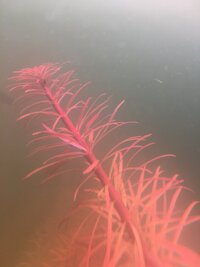The plants are clean! Especially if I give them a little dusting.I commend you for continuing with the warts-and-all photos Josh - still an algae-fest but are you at least still getting the plant forms you are seeking from the high light?
I don’t know.What do you put down as the cause of the algae?
I think it’s like when someone is tired and then you ask well what’s going on in life and then they tell you the whole story lol.
it’s not “unhealthy plants” and they indicate that the acquisition of co2/light/ferts is good.
So I don’t know.
Maybe the system is just too chaotic right now (for some reason plants make it out ok but not everything else - like the plastic and the water 😂).



